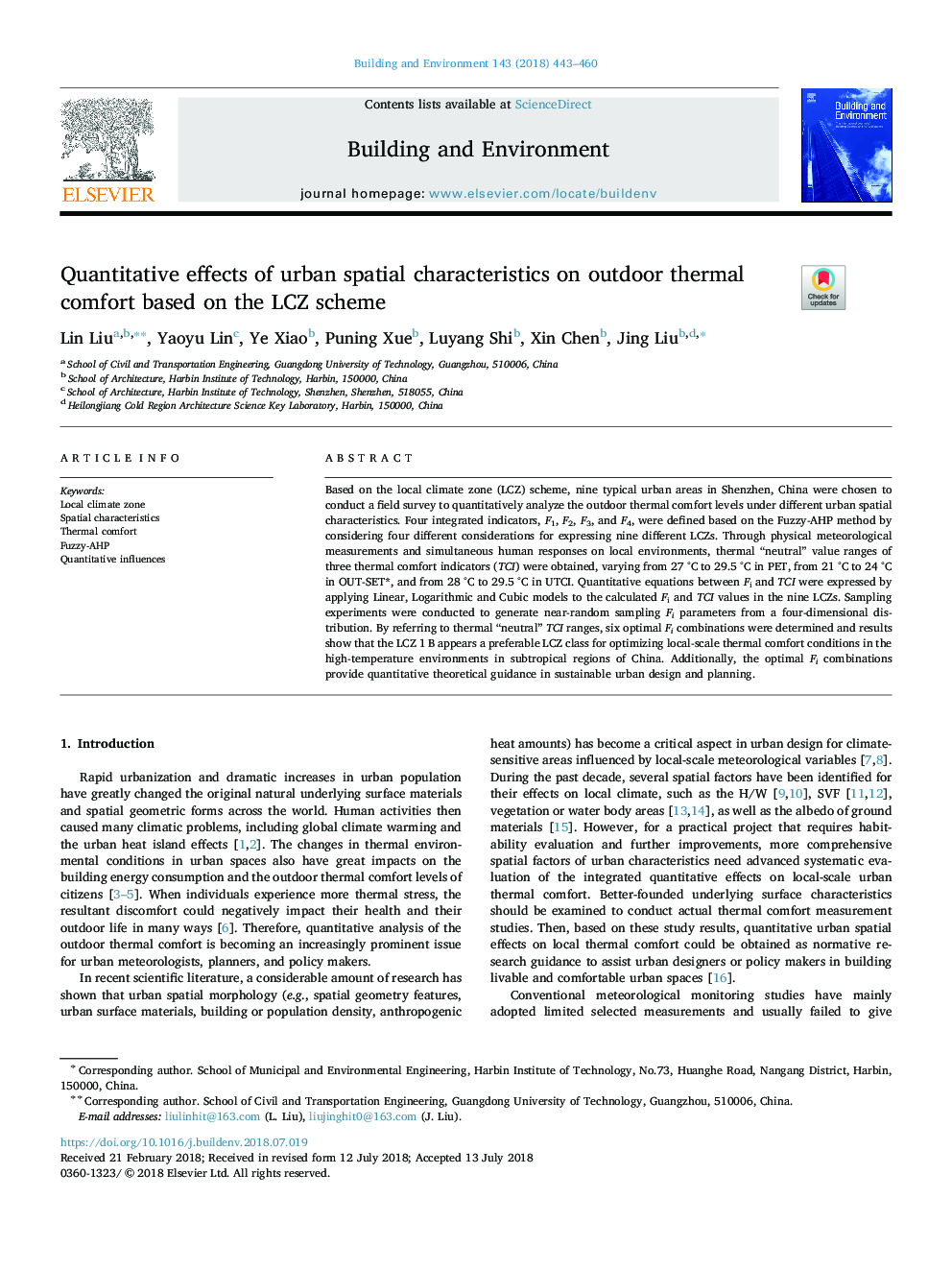| Article ID | Journal | Published Year | Pages | File Type |
|---|---|---|---|---|
| 6696622 | Building and Environment | 2018 | 18 Pages |
Abstract
Based on the local climate zone (LCZ) scheme, nine typical urban areas in Shenzhen, China were chosen to conduct a field survey to quantitatively analyze the outdoor thermal comfort levels under different urban spatial characteristics. Four integrated indicators, F1, F2, F3, and F4, were defined based on the Fuzzy-AHP method by considering four different considerations for expressing nine different LCZs. Through physical meteorological measurements and simultaneous human responses on local environments, thermal “neutral” value ranges of three thermal comfort indicators (TCI) were obtained, varying from 27 °C to 29.5 °C in PET, from 21 °C to 24 °C in OUT-SET*, and from 28 °C to 29.5 °C in UTCI. Quantitative equations between Fi and TCI were expressed by applying Linear, Logarithmic and Cubic models to the calculated Fi and TCI values in the nine LCZs. Sampling experiments were conducted to generate near-random sampling Fi parameters from a four-dimensional distribution. By referring to thermal “neutral” TCI ranges, six optimal Fi combinations were determined and results show that the LCZ 1â¯B appears a preferable LCZ class for optimizing local-scale thermal comfort conditions in the high-temperature environments in subtropical regions of China. Additionally, the optimal Fi combinations provide quantitative theoretical guidance in sustainable urban design and planning.
Related Topics
Physical Sciences and Engineering
Energy
Renewable Energy, Sustainability and the Environment
Authors
Lin Liu, Yaoyu Lin, Ye Xiao, Puning Xue, Luyang Shi, Xin Chen, Jing Liu,
